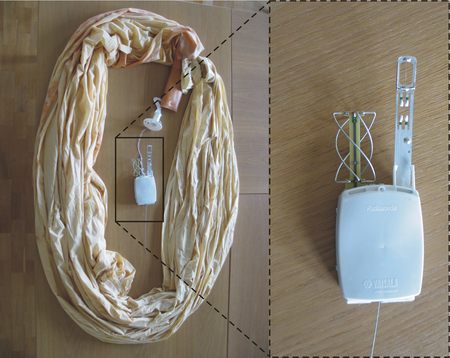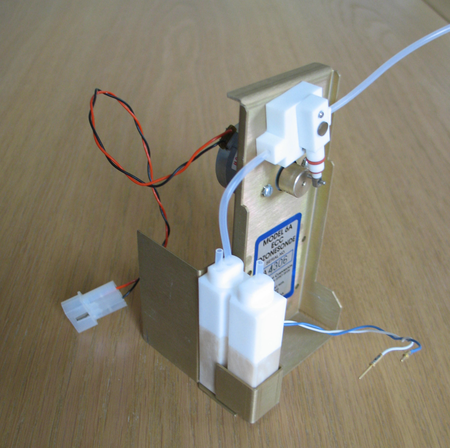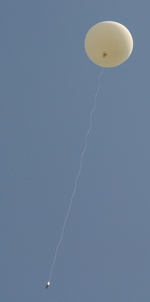Radio sounding system at IAP
The IAP operates at Kühlungsborn a radio sounding system for observations of temperature, pressure, humidity, wind, and ozone concentration from the ground and up to 38 km altitude. Radiosonde data are used as a reference for the temperature and wind soundings (by lidar and radar) and in combination with the turbulence data.
The radiosounding system is manufactured by the finnish company Vaisala. It consists of a receiver type DigiCora III MW 21 and a directed antenna usable for distances of more than 200 km. By this the system can be used also during strong winds with large drift distances. The sondes of type RS 41 are state of the art of modern weather observations. The flying part of the hardware consists of
- the radiosonde with sensors for air pressure, humidity and temperature, the transmitter, the GPS antenna, and an interface for other sensors like an ozone sensor,
- a 60 m balloon rope,
- a parachute (only necessary with the ozone sensor),
- a rubber balloon of 1200 g weight and 1.5 – 2 m diameter at the ground.
The ground-station consists of
- a ground-check unit for the calibration of the sensors prior to the launch,
- a directed antenna for the telemetry,
- a GPS antenna for the reference position used to localize the balloon exactly,
- a receiver and processing PC,
- a PC for the display and storage of the data.
The balloon is filled with helium gas and lifts the radiosonde (200 g, with ozone sensor 700 g) with a speed of about 5 m/s up into the stratosphere. During the ascent the sensors are positioned about 60 m below the balloon to measure the atmosphere outside the disturbances of the wake of the balloon. The telemetry signal is emitted in the transmission band 400-406 MHz. This radio frequency band is exclusively reserved for the weathersondes of national weather services and research institutes.
Measuring principle
The observation of temperature, pressure, and humidity base all on the measurement of capacities. E.g., for humidity measurements the dielectric coefficient of a polymer (between the plates of a miniature capacitor) changes depending on ambient humidity. For the wind sounding the position of the sonde is permanently recorded and the position change, i.e. the wind, is calculated.
The ozone concentration is measured electro-chemically with a separate sensor. For this the ambient air is pumped into a reaction chamber with a solution of potassium-iodide. The solution reacts with the ozone, changing the ion-content of the solution. The ion content is equalized via an ion bridge from a reference chamber. The electrical circuit is closed by a wire and the current is measured. With a suitable calibration this current can be converted into an ozone concentration.















